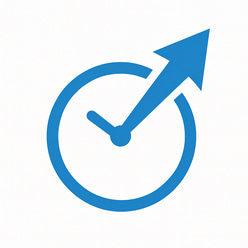Turning Sketches into Sales: How to Launch a Print-on-Demand Art Store and Build Passive Income
CAREER FREEDOM & MONEY
5/20/20253 min read


Introduction: Why Print-on-Demand is a Smart Business Model for Artists
If you’ve ever dreamed of turning your sketches, doodles, and digital art into products people actually buy, print-on-demand (POD) might be your ideal entry point into the world of creative entrepreneurship. With no inventory, low upfront costs, and endless customization options, artists can now sell their work on apparel, home decor, stationery, and more—without handling fulfillment.
This guide walks you through every step of launching a profitable POD art store, from choosing your niche and designing products to setting up your shop, pricing your work, and scaling with marketing.
Chapter 1: What Is Print-on-Demand and How Does It Work?
Print-on-demand is a fulfillment model that allows you to sell custom products without holding inventory. When a customer places an order, your design is printed, packed, and shipped by a third-party provider.
Popular POD products for artists:
T-shirts and hoodies
Canvas prints and posters
Phone cases and tote bags
Stickers and notebooks
Pillows, mugs, and art prints
Top POD platforms:
Printful
Printify
Gooten
Redbubble
TeePublic
Society6
Chapter 2: Finding Your Art Style and Market Niche
Before you start uploading random designs, define your artistic identity and target audience.
Questions to ask:
What art style do I enjoy creating most?
What product types naturally fit my artwork?
Who is my ideal buyer (age, interest, values)?
Examples of art niches that sell well:
Minimalist line art for home decor
Whimsical animal illustrations for kids’ clothing
Bold, urban designs for streetwear
Botanical or nature themes for eco-conscious shoppers
Pro tip: Sketch in themed batches to create cohesive collections.
Chapter 3: Creating High-Quality Artwork for POD Products
Tools to consider:
Procreate or Adobe Illustrator for vector designs
Photoshop or Affinity for mockups and photo editing
Canva for layout and social content
Design best practices:
Use high resolution (300 DPI)
Design with bleed areas in mind
Remove unnecessary backgrounds (transparent PNGs for apparel)
File formats to export:
PNG for transparent graphics
JPG for posters and photos
PSD/AI for editable master files (if you plan to expand later)
Chapter 4: Choosing the Right POD Platform
There are two main types of POD platforms:
Marketplace-based (Redbubble, TeePublic, Society6)
Built-in audience
Easy to set up
Limited branding control
Integrations with your online store (Printful, Printify)
Connect with Shopify, WooCommerce, Etsy
Full brand control and customer ownership
Requires traffic-driving efforts
Comparing platforms:
FeatureRedbubblePrintful + ShopifySetup CostFreeShopify monthly feeProfit MarginMediumHigh (with control)CustomizationLimitedFull branding, packaging
Choose based on your goals: passive listings or full business growth.
Chapter 5: Setting Up Your Print-on-Demand Art Store
Step-by-step guide for Redbubble or Printful + Shopify:
Create your account
Upload your designs and assign products
Write compelling product titles and descriptions
Set competitive pricing and profit margins
Create collections or product lines
Customize your store’s branding (logo, banner, about page)
Design Tip: Use mockups to show your art in lifestyle settings—t-shirts being worn, posters on walls, mugs on desks.
Chapter 6: Pricing Your Art Products for Profit
How pricing works:
Product base cost (set by POD provider)
Your markup = profit
Example:
Mug base cost = $8
Retail price = $18
Your profit = $10 per sale
Factors to consider:
Competitor pricing
Perceived value of your brand
Target market’s spending comfort
Use tiered pricing: offer both low-ticket items (stickers, cards) and premium items (canvas prints, framed art).
Chapter 7: Launching and Marketing Your Store
Even great art needs visibility. Build a marketing plan that works with your schedule.
Free methods:
Pinterest boards and pins
Instagram reels and stories
YouTube time-lapse or tutorials
Blogging with SEO-focused posts
Paid methods (once ready to scale):
Facebook/Instagram ads
Etsy promoted listings
Pinterest ads for seasonal collections
Email marketing:
Offer a free printable to grow your list
Send updates on new launches or behind-the-scenes content
Chapter 8: Customer Service, Reviews, and Building Loyalty
Though POD partners handle fulfillment, you must own the customer experience.
Best practices:
Respond quickly to questions
Ask for reviews post-purchase
Offer bundle discounts and limited edition runs
Surprise loyal buyers with freebies or exclusive access
Pro tip: Positive reviews and user-generated content (photos of your art in homes) build credibility fast.
Chapter 9: Scaling Your POD Art Store Over Time
How to grow:
Expand your product lines
Add holiday or seasonal collections
Collaborate with influencers or other artists
Launch limited drops or subscription boxes
Data matters:
Track your bestsellers and double down
Use analytics tools from Shopify, Etsy, and social platforms
Diversify:
Repurpose art for licensing, stock sales, or digital downloads
Conclusion: Your Sketches Can Fund Your Freedom
Turning your sketches into a print-on-demand store isn’t just about making a few sales—it’s about building a business that celebrates your creativity, supports your lifestyle, and pays you long after the artwork is finished.
With the right mindset, systems, and steady action, you can create a sustainable income stream doing what you love—on your terms.
Call to Action: Launch Your First Product This Week
Choose one design from your sketchbook. Digitize it, clean it up, and upload it to a POD platform like Redbubble or Printful. Create a mockup and share it on social media. That one upload could be your first sale—and the beginning of your art business journey.
Beyond9to5Life.com
"Empowering Others Is The Most Effective Form of Service to Humanity"
Connection
Momentum
info@beyond9to5life.com
772-228-1494
© 2025. All rights reserved.
